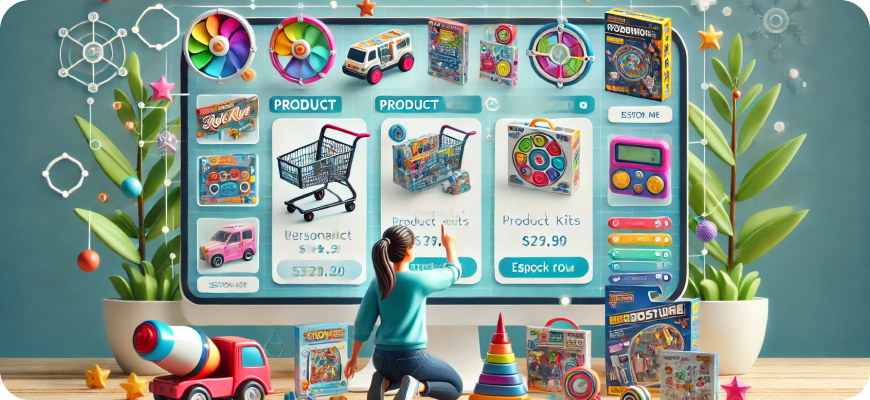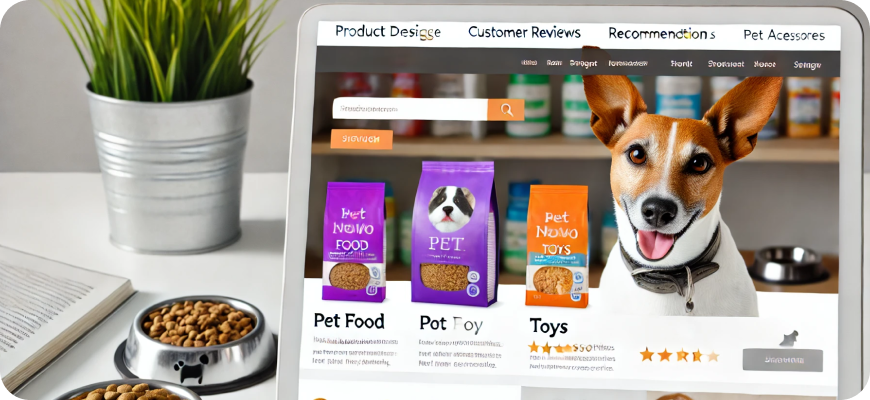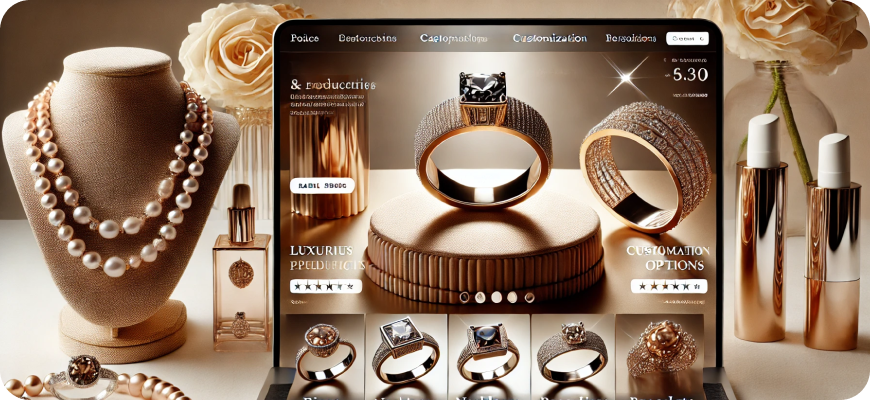Ecommerce Best Practices for Sports & Outdoors
The sports and outdoors e-commerce industry has grown significantly as consumers increasingly turn to online platforms to purchase everything from fitness equipment and outdoor gear to apparel and accessories. The sector’s broad scope and variety of products present unique challenges and opportunities, such as offering personalized recommendations, creating engaging content, and optimizing logistics for large items. To succeed, brands must build trust, foster loyalty, and create seamless online shopping experiences tailored to the unique demands of sports and outdoor enthusiasts.
Here is a comprehensive guide to e-commerce best practices for sports and outdoors businesses.
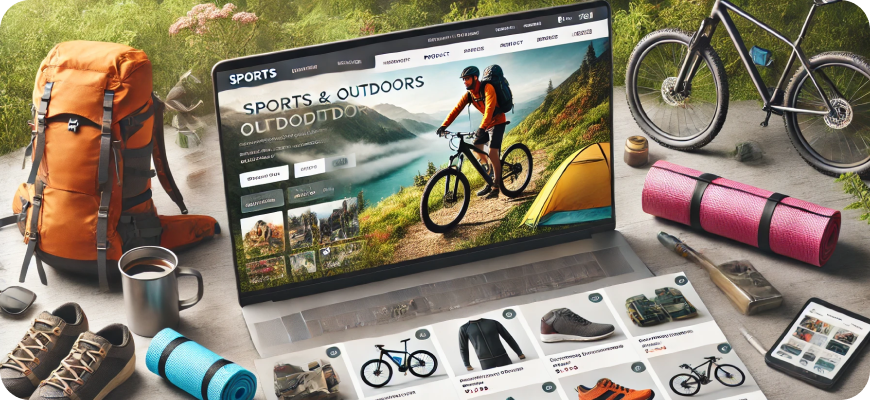
1. Provide High-Quality Visual Content
Visual content plays a crucial role in the sports and outdoor market, where customers often need to see how products perform or fit into their active lifestyles:
- Detailed Product Images: Offer high-resolution images that showcase products from multiple angles. Include close-ups of key features such as material, zippers, and stitching.
- Lifestyle Photos: Use lifestyle images showing people using the products in real-life settings, such as hiking in the mountains, cycling in urban areas, or exercising at the gym.
- Product Videos: Demonstrate how products work through videos. For example, show how a tent is set up, how a kayak performs in water, or how fitness equipment can be used effectively.
2. Offer Detailed Product Descriptions and Technical Specifications
Sports and outdoors customers often need precise information to make informed buying decisions:
- Technical Details: Provide technical specifications such as dimensions, weight, material composition, and usage recommendations (e.g., waterproof ratings for rain jackets).
- Performance Insights: Highlight key performance features, such as moisture-wicking properties, thermal insulation, or shock absorption.
- Usage Guidelines: Offer practical advice on how to use, maintain, and store the product to ensure it lasts longer and performs well.
3. Implement Personalization and Product Recommendations
Customers appreciate personalized experiences, especially when shopping for gear tailored to specific activities:
- AI-Driven Product Recommendations: Use AI to analyze browsing history, purchase behavior, and user preferences to provide personalized product recommendations.
- Activity-Based Suggestions: Offer recommendations based on customers’ interests, such as running, hiking, camping, or water sports.
- Customizable Products: Allow customers to personalize gear, such as choosing colors, adding names, or selecting specific features.
4. Optimize for Mobile Shopping
Mobile optimization is critical, as many customers browse and shop using their smartphones:
- Responsive Mobile Design: Ensure your website is fully optimized for mobile, with fast loading times, intuitive navigation, and touch-friendly buttons.
- Mobile Checkout Process: Simplify the checkout process by minimizing form fields and offering mobile payment options like Apple Pay, Google Pay, and digital wallets.
- AR Capabilities: Consider implementing augmented reality (AR) tools that let customers visualize products, such as trying on running shoes or viewing how outdoor furniture fits in their yard.
5. Provide Product Comparisons and Buying Guides
Buying sports and outdoors gear often involves comparing multiple products to find the right fit:
- Product Comparison Tools: Offer a tool that lets customers compare products side by side based on features, specifications, and prices.
- Buying Guides: Create detailed buying guides that help customers choose the right products based on their needs, such as “How to Choose the Best Running Shoes” or “Camping Gear Essentials for Beginners.”
- Expert Advice Sections: Include advice from industry experts, athletes, or outdoor enthusiasts who can provide tips and product recommendations.
6. Emphasize Sustainability and Ethical Practices
Sustainability is a growing priority for many consumers, particularly in the outdoor and sports industry:
- Eco-Friendly Products: Highlight products made from sustainable, recyclable, or ethically sourced materials.
- Transparent Sourcing: Communicate your brand’s commitment to ethical sourcing and fair labor practices, such as partnerships with sustainable suppliers.
- Recycling Programs: Offer incentives for customers to recycle old gear, such as trade-in programs or discounts on new purchases.
7. Leverage User-Generated Content (UGC) and Influencer Partnerships
User-generated content and influencer collaborations build trust and showcase your products authentically:
- Customer Reviews and Ratings: Encourage customers to leave reviews and upload photos of themselves using the products. Verified reviews build credibility.
- Social Media Campaigns: Run campaigns that encourage customers to share their experiences using branded hashtags, and feature this UGC on your website and social channels.
- Influencer Collaborations: Partner with athletes, adventurers, and outdoor enthusiasts to create engaging content, product reviews, and tutorials.
8. Offer Flexible Payment and Financing Options
Many sports and outdoor products can be expensive, so offering flexible payment options can help customers complete their purchases:
- Buy Now, Pay Later (BNPL) Services: Partner with services like Klarna, Afterpay, or Affirm to offer financing options.
- Installment Plans: Provide interest-free installment options for high-ticket items such as kayaks, bicycles, or gym equipment.
- Multiple Payment Options: Support various payment methods, including credit/debit cards, PayPal, digital wallets, and bank transfers.
9. Focus on Strong SEO and Content Marketing
Optimized content and SEO strategies can drive organic traffic and establish your brand as a trusted resource:
- Keyword Optimization: Target relevant keywords related to sports and outdoor gear in product titles, descriptions, and blog posts.
- Content Creation: Publish valuable content, such as blog posts, videos, and how-to guides. Examples include “Top 10 Hiking Trails in the U.S.” or “How to Train for a Triathlon.”
- Local SEO for Outdoor Activities: If you have brick-and-mortar stores, optimize your content for local searches related to outdoor activities in your region.
10. Streamline the Checkout Process
Reducing friction at checkout can minimize cart abandonment and improve conversions:
- Guest Checkout Option: Allow customers to make purchases without creating an account.
- Progress Indicators: Use progress indicators during checkout to show customers where they are in the process.
- Auto-Fill and Payment Security: Utilize auto-fill options for payment and shipping information and ensure robust security measures to protect customer data.
11. Offer Exceptional Customer Support
Quality customer support can make a significant difference, especially for high-value or specialized purchases:
- Live Chat and Chatbots: Offer 24/7 live chat support for product inquiries, order issues, and general questions. Chatbots can handle common queries, while human agents assist with complex issues.
- Easy Returns and Exchanges: Implement a hassle-free return policy with clear guidelines, and offer online return portals for convenience.
- Product Troubleshooting Guides: Provide support articles, videos, and FAQs that address common product issues or usage tips.
12. Use Interactive and Immersive Content
Interactive content can enhance engagement and provide valuable information to customers:
- AR Product Visualizations: Use AR to let customers see how products look in their environment, such as tents in their backyard or gym equipment in their home.
- Quizzes and Customization Tools: Offer quizzes to help customers find products that match their needs, such as “Which Yoga Mat Is Right for You?” or “Find Your Perfect Trail Running Shoes.”
- Product Demos and Tutorials: Create video tutorials and product demos that demonstrate features and usage in real-world settings.
13. Focus on Fast and Reliable Shipping
Fast shipping is crucial for online shoppers, especially for urgent needs like sports gear for upcoming events:
- Multiple Shipping Options: Offer a range of shipping options, including expedited and same-day delivery, to meet varying customer needs.
- Real-Time Order Tracking: Provide customers with real-time tracking updates for their orders.
- Eco-Friendly Packaging: Consider using recyclable and eco-friendly packaging to appeal to environmentally conscious shoppers.
14. Build a Loyalty Program
Loyalty programs encourage repeat purchases and long-term customer relationships:
- Points-Based Rewards: Offer points for every purchase, referrals, and customer reviews. Customers can redeem points for discounts or exclusive items.
- Exclusive Perks: Provide loyalty members with exclusive perks, such as early access to sales, special discounts, or limited-edition products.
- Referral Incentives: Reward customers who refer friends or family members to your store with discounts, points, or free items.
15. Use Data Analytics to Optimize Performance
Data-driven insights help you understand and improve customer experiences:
- Customer Segmentation: Segment your audience based on their activity preferences, purchase history, and other data to tailor marketing campaigns.
- Cart Abandonment Analysis: Track and analyze cart abandonment rates, and use retargeting campaigns, reminders, and discounts to recover lost sales.
- A/B Testing: Run A/B tests on product pages, checkout flows, and promotions to determine which elements drive the best results.
16. Highlight Promotions and Seasonal Campaigns
Promotions and seasonal campaigns can drive engagement and sales spikes:
- Limited-Time Offers: Run flash sales, limited-time discounts, and seasonal promotions tied to holidays or peak activity periods (e.g., summer outdoor gear).
- Bundle Discounts: Offer product bundles with a discount, such as camping kits or fitness packages.
- Email Campaigns: Use email marketing to promote sales events, new product launches, and exclusive offers for loyal customers.
17. Showcase Social Proof and Testimonials
Social proof can influence purchasing decisions:
- Customer Testimonials: Highlight testimonials from customers who have used your products for specific activities or adventures.
- Success Stories: Share customer success stories, such as a climber’s experience with your gear during a challenging expedition.
- Product Ratings and Reviews: Display ratings and reviews prominently to build trust and encourage new customers to buy.
18. Collaborate with Athletes and Outdoor Experts
Partnering with industry experts can elevate your brand:
- Athlete Endorsements: Collaborate with athletes, adventurers, and trainers who can vouch for your products and share their experiences.
- Workshops and Events: Host webinars, workshops, or live sessions with experts on topics like fitness training, hiking tips, or outdoor safety.
- Branded Content: Create in-depth content featuring collaborations with outdoor influencers and experts, offering tips, reviews, and training guides.
19. Optimize Shipping and Delivery Experience
For larger sports and outdoor gear, logistics is crucial:
- Transparent Shipping Costs: Communicate shipping costs and delivery times upfront to avoid surprises.
- White-Glove Service: For large or high-end items, offer white-glove delivery, including assembly and placement in the customer’s space.
- Damage-Free Guarantee: Implement policies to replace damaged items and provide reassurance to customers.
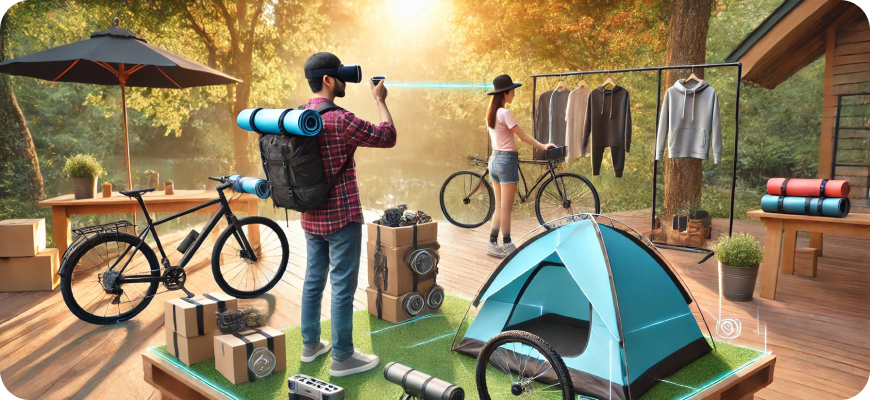
Conclusion
The sports and outdoors e-commerce industry thrives on personalized experiences, quality content, and seamless customer service. By focusing on high-quality visuals, offering flexible payment options, providing robust support, and leveraging personalization, brands can build trust and encourage repeat business. Whether you’re selling fitness equipment, outdoor apparel, or camping gear, following these best practices will ensure a positive customer experience, drive engagement, and foster long-term success.

